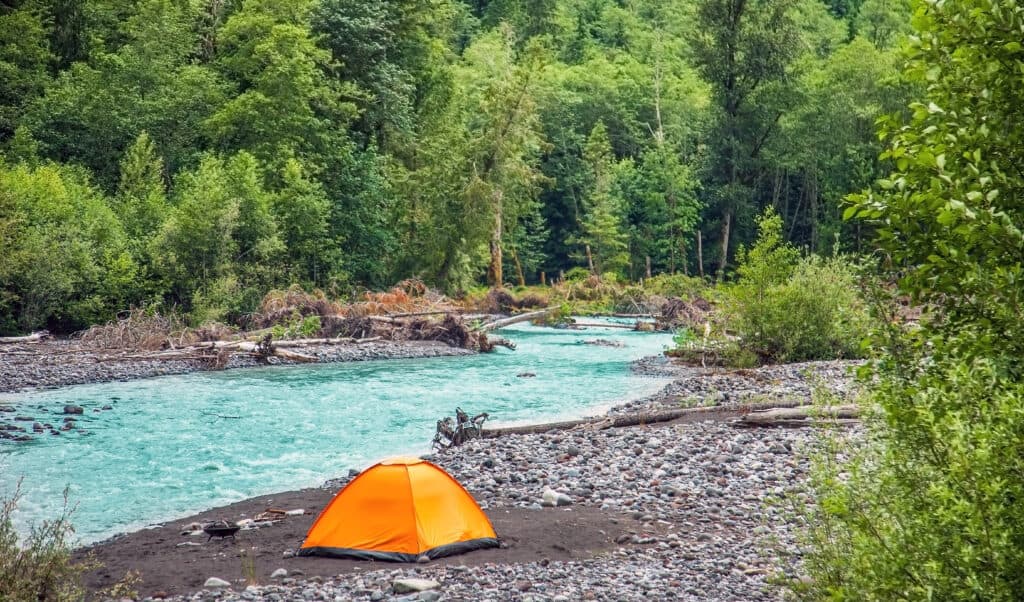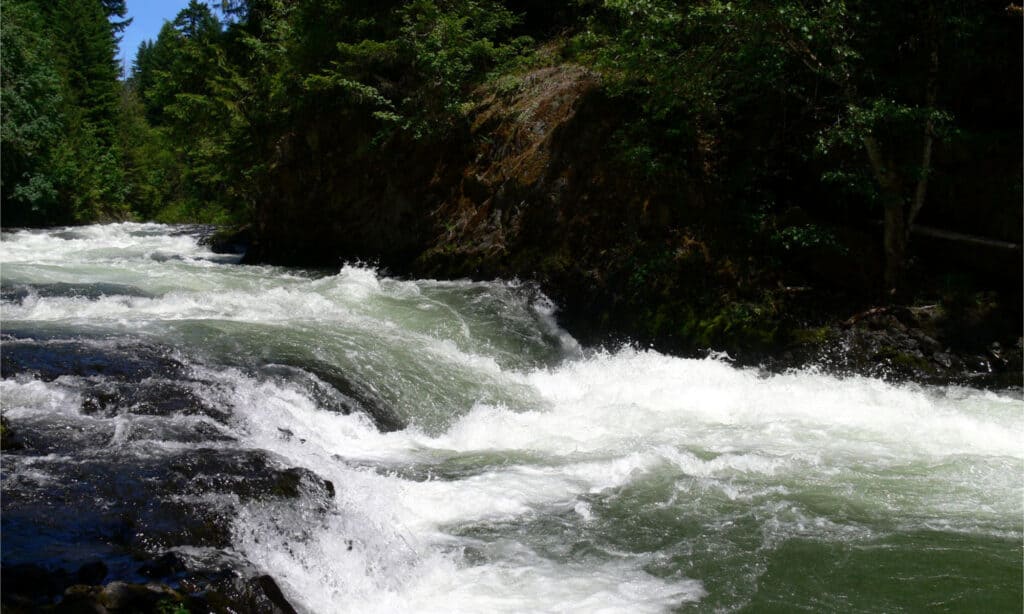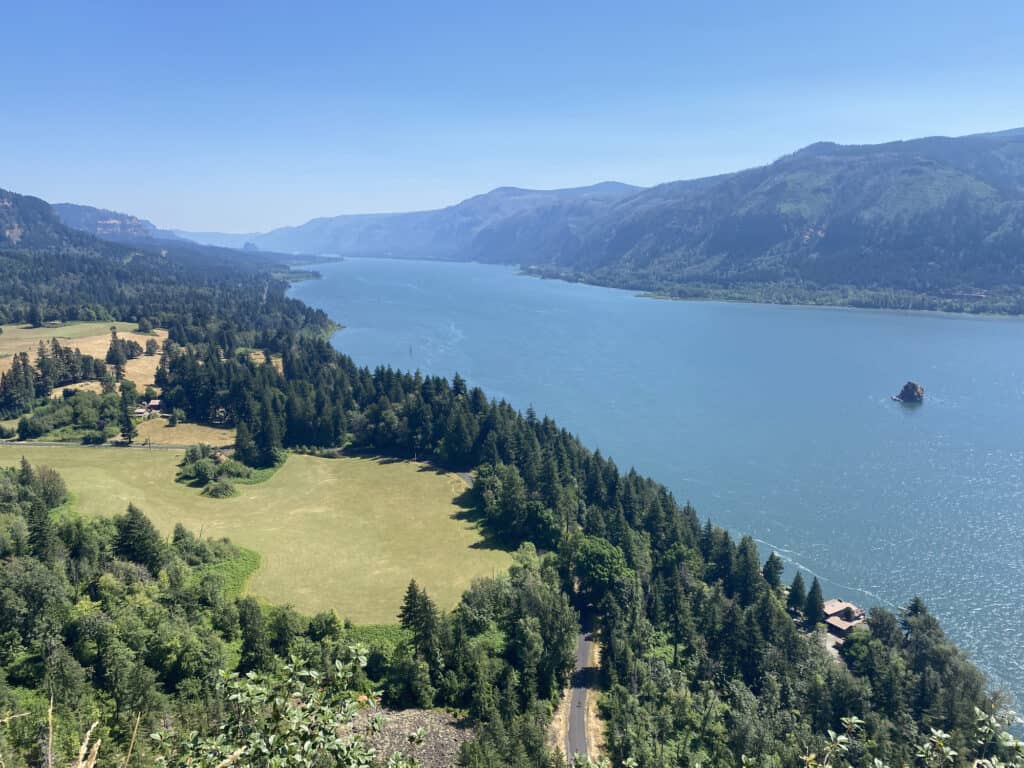Washington State is full of gorgeous scenery and spectacular rivers. The rivers in Washington are vital to the state and supply clean drinking water, irrigate crops, and provide habitats for fish and wildlife. They also bring an assortment of outdoor recreation, such as whitewater rafting, kayaking, fishing, and boating. Additionally, people enjoy camping, birdwatching, and hiking along the picturesque waterways.
However, tragedies on Washington rivers do sometimes occur. Undercurrents can sweep swimmers under the water, which contains rocks, tree limbs, and other debris. Wildlife tends to stay away from humans, but some species can be threatening. And finally, during certain times of year, the water speeds can reach dangerously fast levels. But just how dangerous are Washington rivers? Let’s take a look.
Severe Risk of Drowning: Rate of Drowning in Washington State
Unfortunately, there have been tragic accidents occurring in rivers in the state of Washington. According to data from American Whitewater, there have been 122 drownings in Washington rivers since 1987.
A report from the CDC states there are 1.5 drowning deaths per 100,000 people in the state. This puts Washington in the top 20 for drowning deaths per 100,000 in the nation. This is ahead of the national average of 1.3 drowning deaths per 100,000. Overall, in the United States, there was an average of over 4,000 unintentional drowning deaths each year from 2012 to 2021.
While accidents do happen, drowning is preventable. The Washington State Department of Health reminds people to wear life jackets for activities in their rivers, lakes, and streams. They also recommend swimming when lifeguards are present, checking the conditions of the water before you go, and avoiding mixing alcohol with water activities.
Natural Dangers of Washington’s Rivers

People enjoy camping along the Nisqually River in Mount Rainier National Park in Washington State.
©SchnepfDesign/Shutterstock.com
Despite the pristine beauty of Washington’s waterways, they can be dangerous.
Flood Areas and Water Levels
Sometimes river levels rise and overflow their banks, flooding areas that are normally dry. This is called river flooding, and it can be caused by rapid snowmelt, heavy rainfall, dam failures, and ice jams.
The Columbia River, in particular, has a long history of severe flooding. There have been several intense floods, with the most severe occurring in 1894. The “Great Flood of 1894” was the highest the Columbia River was ever recorded. The flood destroyed the entire community of Cascades, which was never rebuilt.
River Flow Rates
River flow rates can vary based on seasons. According to the Washington State Department of Health, spring is the time rivers are the swiftest. Melting snowpacks create fast currents. The water is cold and flows so rapidly, that even the strongest of swimmers can struggle.
In the winter, the water is frigid and can quickly go from calm to rough. If you’re on the water in winter for hunting or fishing, be sure to wear your life jacket and protective clothing.
Geographical Dangers
Although spring has the swiftest currents, and the rivers may flow more calmly during the summer, it doesn’t mean there are no dangers at other times of the year. Log jams can trap swimmers under the surface during any season. Large logs and rocks can tip over rafts, canoes, or kayaks.
Chilly Waters
The waters in Washington State are always cold. They flow from snowpacks and glacier melts from the mountains, and even in the summer, they can be frigid. Swimmers in Washington waterways can succumb to cold water shock. This happens in freezing waters when a person’s body is stressed from the cold. Heart and breathing rates rise, and muscles can lock up in minutes, causing paralysis.
Wildlife and Animals

Black bears are good swimmers and will hunt for fish in rivers and lakes.
©Elizabeth Caron/Shutterstock.com
Washington is home to a diverse array of wildlife. Although most animals and fish pose no threat to humans, there are some species to watch out for.
Bears
Black bears and grizzly bears both live in Washington. However, if you spot a bear, it’s most likely a black bear, as the grizzly bear population is sparse in the state. Bears are excellent swimmers and sometimes head to the river to hunt for fish. It is possible to spot a bear near or even swimming in a river in Washington.
Western Rattlesnake (Northern Pacific Rattlesnake)
The western rattlesnake is the only species of venomous snakes in Washington. Rattlesnakes are good swimmers and can be found swimming in lakes and rivers as they hunt for their prey.
Moose
These massive and strong animals can easily stand in deep waters where other animals would be swept away. Moose are fast swimmers, and can often be found near water. The biggest moose population in Washington is northeast part of the state, although they can be found in other areas. Moose can be dangerous when they feel threatened and have been known to attack humans.
Mosquitoes
More than an annoyance, mosquitoes can be deadly. These tiny pests carry diseases such as West Nile virus, Zika, and encephalitis. Washington is home to over 40 different mosquito species. Mosquitos thrive in wet areas. Waterways, such as creeks and rivers are attractive breeding grounds for mosquitoes.
What Are the Most Dangerous Rivers in Washington?
Although safety is important in any waterway, some rivers in Washington are more dangerous and contribute to more accidents than others. Some of the most dangerous rivers in Washington include the following.
Wenatchee River

Rocks, logs, and other debris can make the Wenatchee River a dangerous spot for swimming.
©iStock.com/Mark Lee
At least 21 people have drowned in the Wenatchee River in the past 36 years, according to data from American Whitewater, although other estimates put this at even higher. This 53-mile river originates in Lake Wenatchee and empties into the Columbia River. It’s a beautiful river as it flows through the mountainous terrain, and is popular for recreation and water sports. However, without a life jacket, the river can be treacherous. Kayaks can hit debris such as rocks and logs, swimmers can get caught up in logjams, and canoes and rafts can hit rocks and tip over.
Skykomish River

The scenic Skykomish River flows from the Cascade Mountains to Puget Sound. Close to Seattle, it’s a popular spot for whitewater rafting.
©Ron Clausen / CC BY-SA 4.0
The Skykomish River flows for 29 miles through stunning Pacific Northwest terrain. The water is cold and clear, and the views of the mountains are breathtaking. However, Skykomish waters can be deadly. In the past 36 years, there have been at least 15 accidental drownings in the river. The river can develop whirlpools and dangerous undercurrents that can pull swimmers under the surface.
White Salmon River

Portions of the White Salmon River are dangerous and wild. The waterfalls, rapids, and drop-offs are challenging for even the most experienced whitewater rafters and boaters.
©Gary Gilardi/Shutterstock.com
The White Salmon River is a 44-mile tributary of the Columbia River. While it’s a popular river for whitewater rafting year-round, the water can be dangerous. Since it flows down from glacier melt and snowpacks coming from Mount Adams, the river’s current and rate of flow can be unpredictable. There may be hidden obstacles under the surface of the water which can cause rafts or kayaks to capsize. According to data from American Whitewater, there have been at least nine drownings in the last 36 years.
Columbia River

The Columbia River forms in the Rocky Mountains of British Columbia and flows for 1,200 miles.
©iStock.com/Sharla Libera
Finally, the Columbia River is one of the largest rivers in the United States and flows from the Pacific Ocean to the Canada, Oregon, and Idaho borders in Washington. It starts at the Columbia Lake in British Columbia at an elevation of 2,700 feet above sea level.
Although it’s a popular river for recreation, there are parts along the river with treacherous currents. Another problem is pollution and bacteria can be high in some parts of the river. Swimmers are advised to bathe after swimming and not to enter the water with open cuts or wounds.
The photo featured at the top of this post is © NayaDadara/Shutterstock.com
Thank you for reading! Have some feedback for us? Contact the AZ Animals editorial team.






